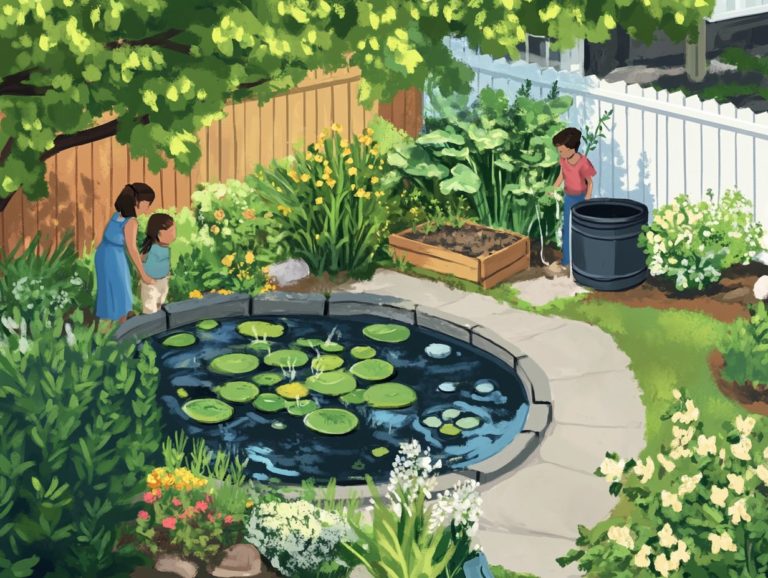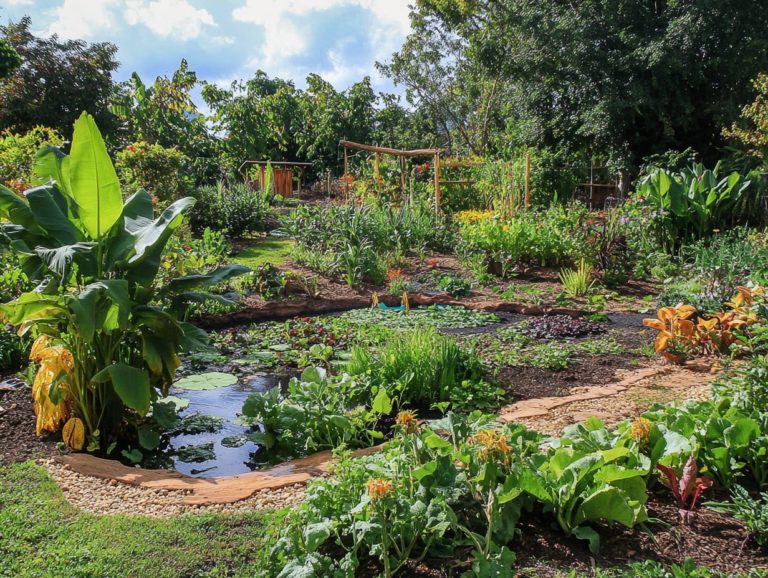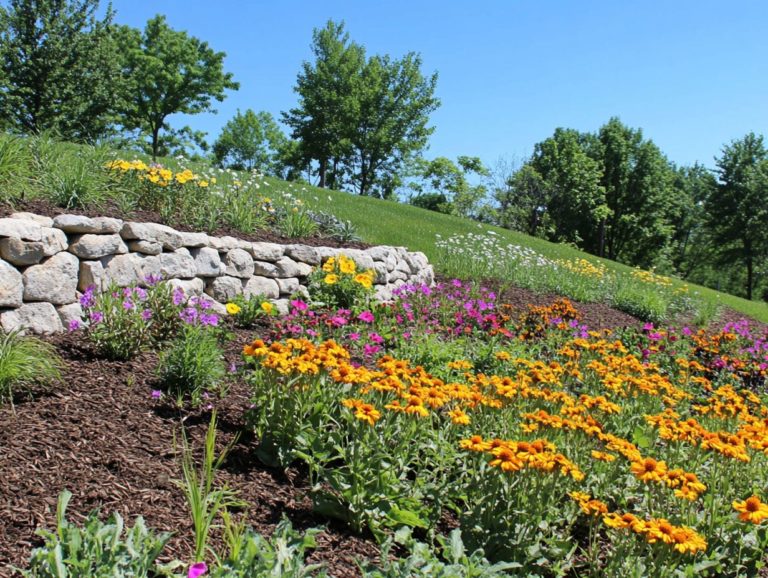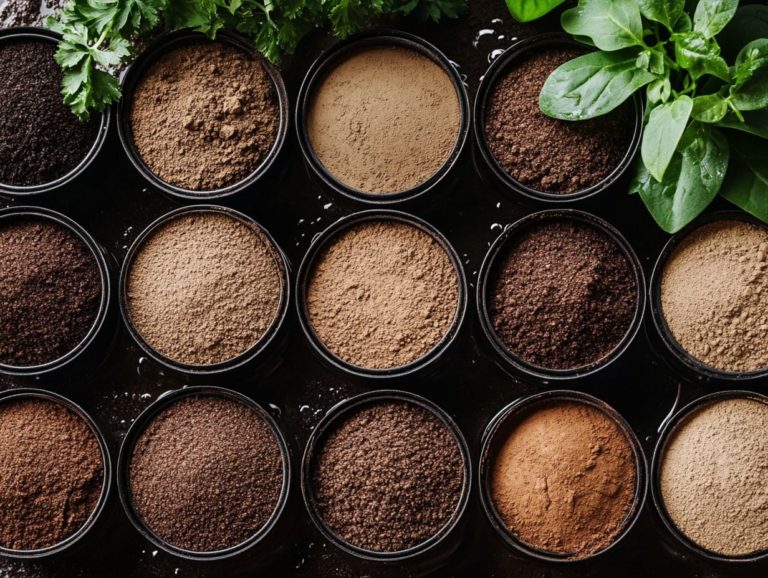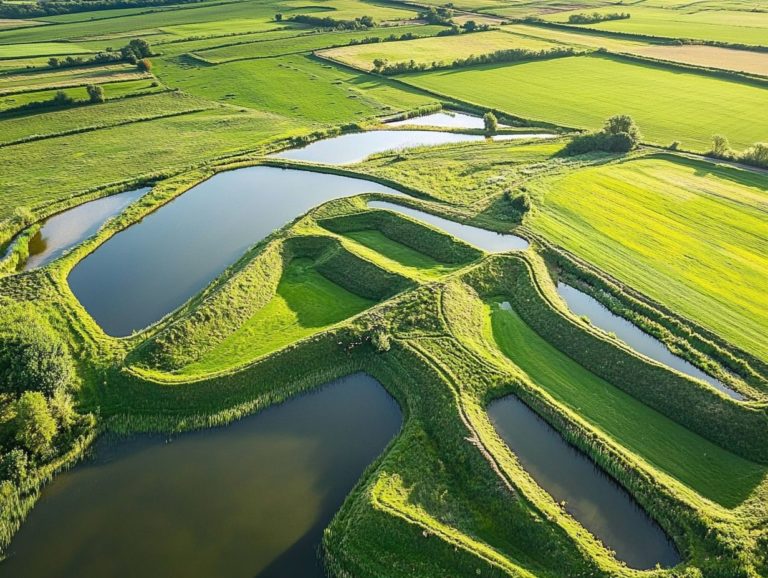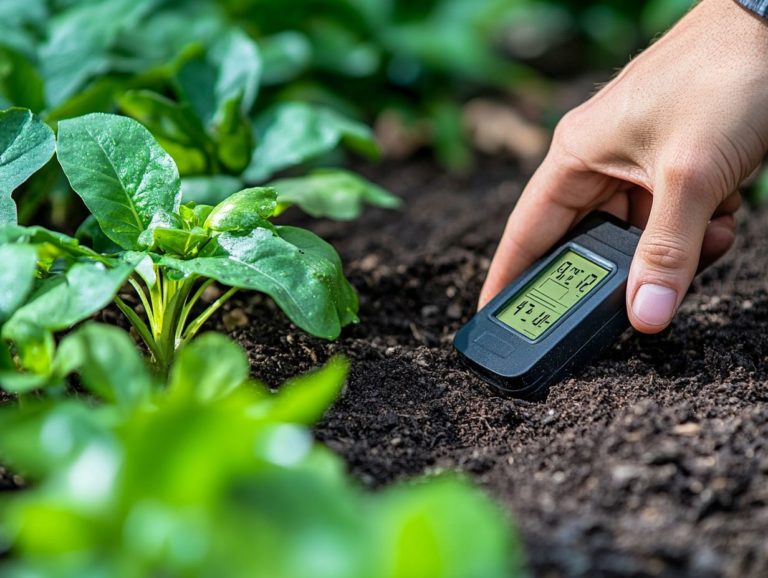How to Monitor Water Levels in Your Garden
Maintaining the right water levels in your garden is essential. It nurtures thriving plants and fosters a healthy ecosystem.
Discover traditional and modern methods for tracking moisture. Various factors influence water retention, including weather conditions and soil type.
Expect practical tips on adjusting water levels. Use effective watering techniques and mulching strategies to ensure your garden flourishes.
Jump in! Learn how to create the perfect environment for your plants by using mulch and monitoring water levels effectively!
Contents
- Key Takeaways:
- Why Monitoring Water Levels is Important
- Methods for Monitoring Water Levels
- Factors Affecting Water Levels in Your Garden
- Frequently Asked Questions
- What are the benefits of monitoring water levels in my garden?
- How often should I check the water levels in my garden?
- How do I check the water levels in my garden?
- What is the best time of day to check water levels in my garden?
- What can I do if I notice my plants are being over or under watered?
- Are there any tools or devices that can help me monitor water levels in my garden?
Key Takeaways:
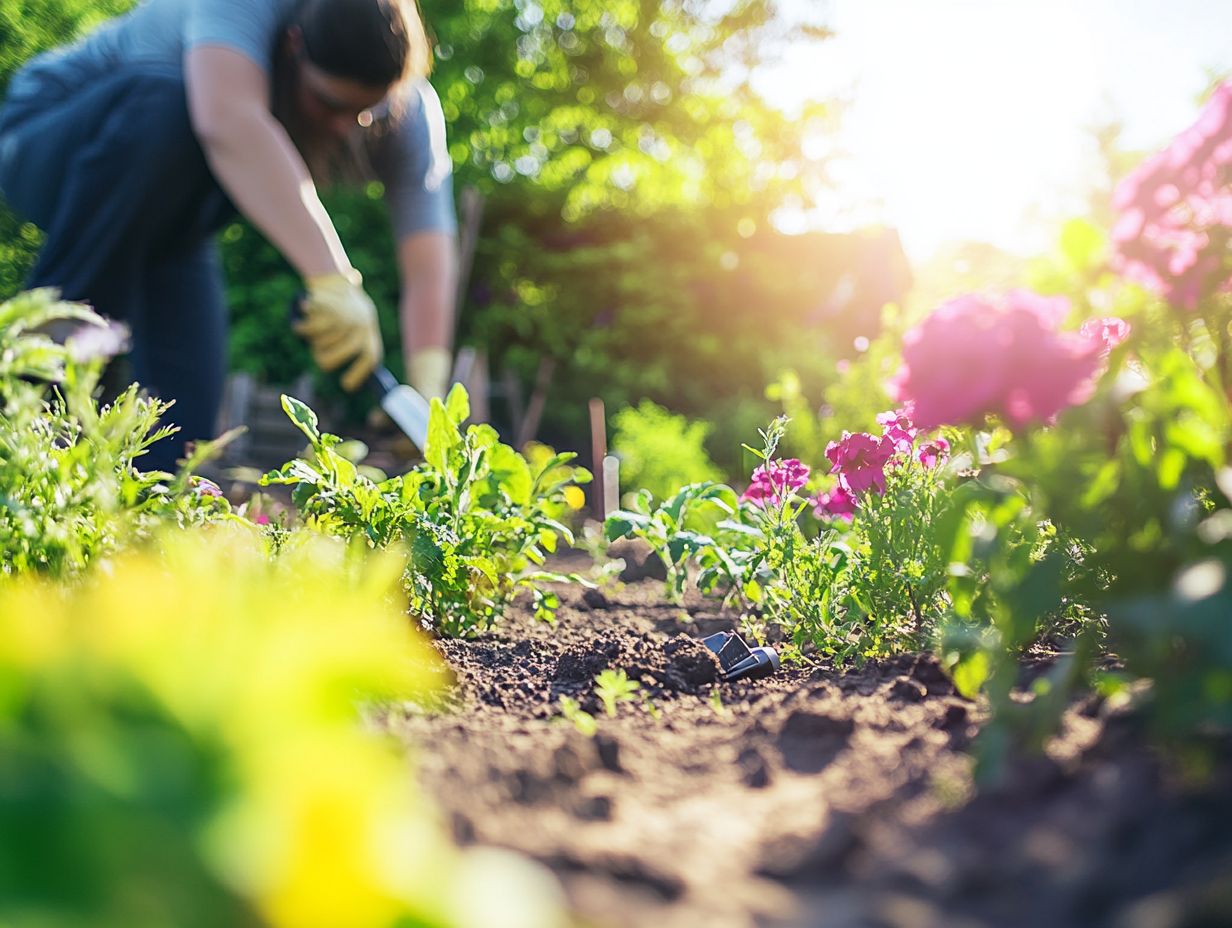
- Keep your plants healthy by regularly checking water levels!
- Traditional techniques like finger testing and visual observation can be effective. However, modern technology offers more accurate and convenient monitoring.
- Factors like weather, climate, soil type, and drainage greatly impact water levels. Consider these when adjusting your watering techniques for optimal growth and avoiding common mistakes.
Why Monitoring Water Levels is Important
Monitoring water levels is essential for the optimal health and growth of your indoor plants. This is particularly true for moisture-loving varieties like Bird of Paradise, ZZ plants, and Snap plants.
By managing water effectively, you can sidestep common pitfalls. Waterlogged soil can lead to stunted growth or even the demise of your beloved greenery.
Understanding the importance of measuring groundwater levels can greatly enhance your indoor gardening success and deepen your knowledge of environmental health.
Impact of Water Levels on Plant Health
Water levels are crucial in determining the health of your indoor plants. Poor management can lead to stunted growth or waterlogged soil.
Too much water can suffocate the roots, resulting in root rot. This condition is particularly harmful for moisture-loving plants like the Bird of Paradise. On the flip side, insufficient water can leave a ZZ plant, renowned for its resilience, with wilted leaves and sluggish growth.
If you notice yellowing leaves and a musty odor coming from the soil, you might be overwatering. Conversely, crispy leaf edges and droopiness indicate underwatering, which can often be corrected by adjusting your watering schedules.
To avoid these issues, keep a close eye on your watering schedules. Ensure proper drainage to create the perfect environment for your leafy companions, while also considering water level fluctuations.
Methods for Monitoring Water Levels
You have several effective methods at your disposal for monitoring water levels. This helps maintain ideal conditions for your indoor plants.
Consider using a soil moisture meter to assess moisture levels accurately. Establish a suitable testing frequency to ensure your plants thrive and help you interpret results effectively.
Traditional Techniques
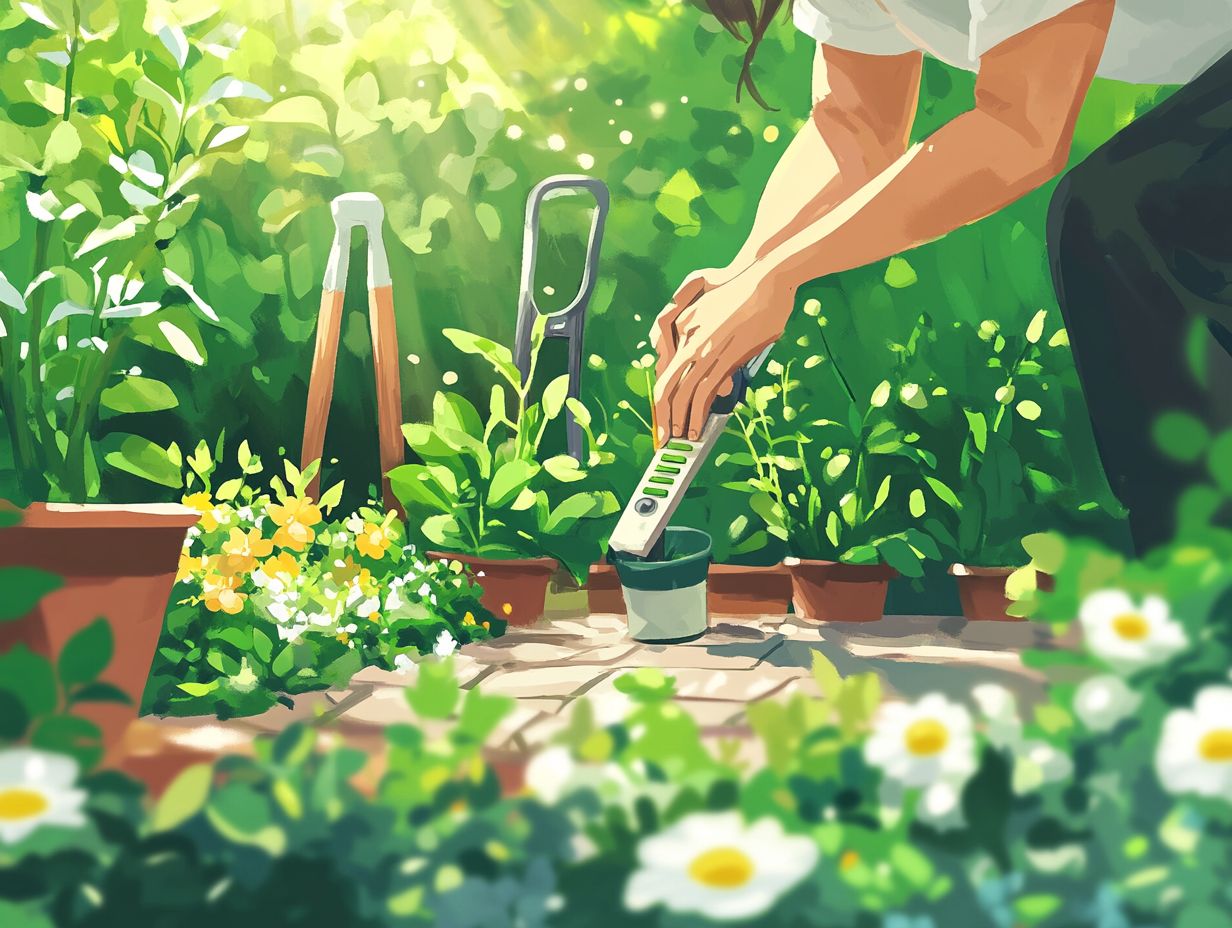
Traditional techniques for monitoring water levels are simple yet effective. To enhance your gardening skills, consider learning how to monitor and improve your garden’s health. They help prevent the pitfalls of overwatering or underwatering your plants.
Finger testing is an easy method: insert your finger into the soil to check its moisture. If you want precision, use a soil moisture meter for accurate readings.
Pay attention to your plants behavior! Drooping leaves or yellowing can indicate it s time to adjust your watering practices. Keep in mind that optimal watering zones can vary depending on the type of indoor plant you have.
Some species enjoy drier conditions, while others thrive in consistently moist soil. Understanding these nuances will significantly enhance the healthy growth and overall health of your indoor plants.
Modern Technology Solutions
Modern technology has transformed how we monitor water levels. Tools like soil moisture meters and water level sensors ensure your plants grow robustly.
These innovations provide valuable insights beyond basic measurements. Moisture meter charts offer real-time data on soil hydration, helping you make informed decisions about your irrigation schedules.
Pressure transducers measure water pressure, clarifying how elevation changes impact hydration. Hydroacoustic sensors, which monitor water levels without touching the water, give valuable insights into both surface and sub-surface water levels.
These advanced solutions optimize resource usage and support sustainable agricultural practices. Together, they help foster a healthier ecosystem!
Factors Affecting Water Levels in Your Garden
Many factors influence water levels in your garden. Pay attention to weather, soil types, and drainage to keep your indoor plants healthy.
Weather and Climate
Weather and climate significantly impact groundwater levels, affecting your indoor plants’ watering needs.
Understanding how seasonal changes, shifting rainfall patterns, and extreme weather events can affect your gardening is essential for any plant enthusiast. Seasonal shifts may require adjustments in humidity levels and light exposure.
In areas prone to flooding, it s crucial to keep a close eye on soil moisture. Adjust your watering strategies accordingly!
For instance, during rainy seasons, scaling back on watering helps prevent over-saturation. Dry spells might require more frequent check-ins to ensure your plants stay hydrated.
Utilizing self-watering systems or moisture meters can be a game changer in navigating these fluctuating conditions!
Soil Type and Drainage
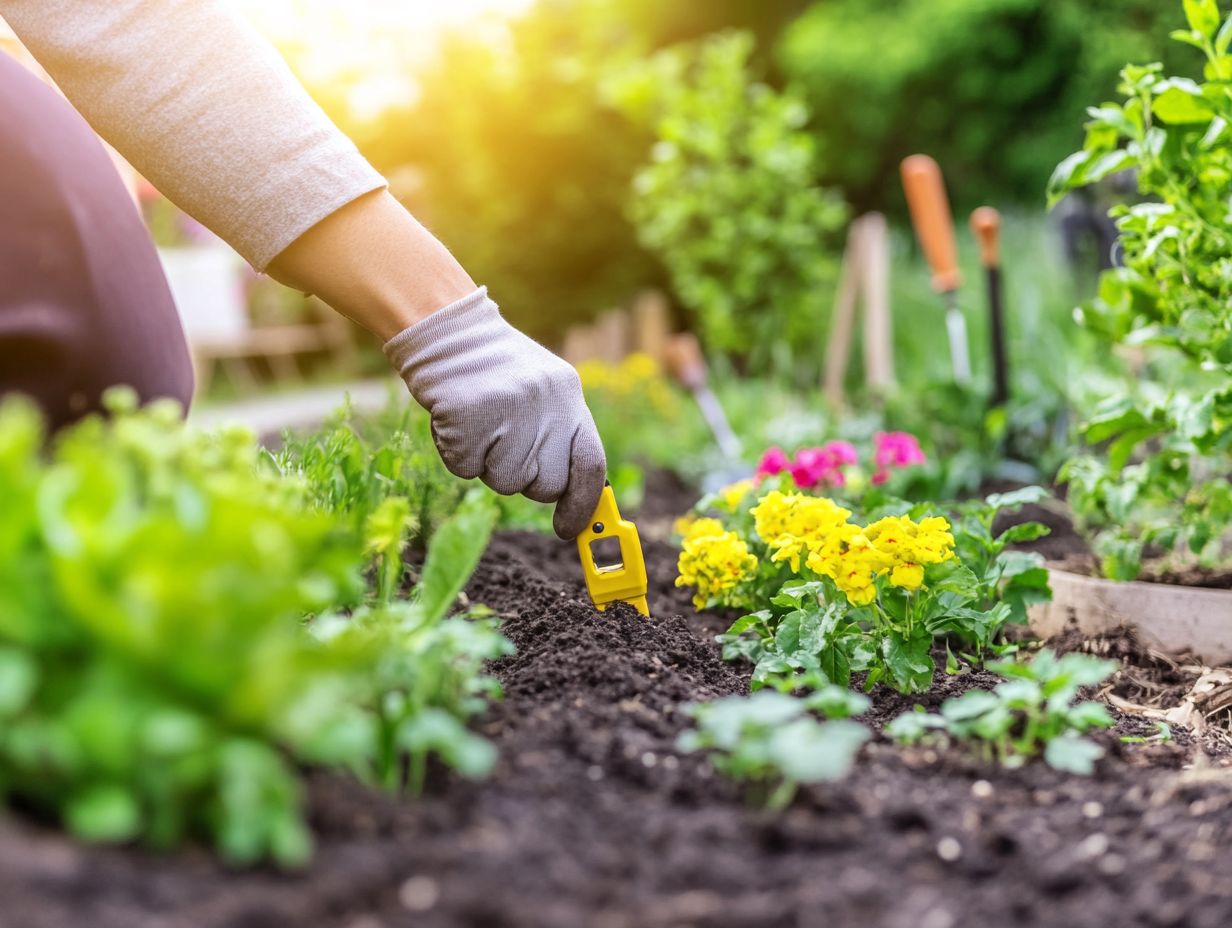
The type of soil you choose and its drainage capabilities are vital for maintaining the right water levels for your indoor plants. After all, nobody wants to deal with the aftermath of waterlogged soil.
When contemplating how different soil types influence water retention, it s important to remember that sandy soils drain rapidly. They re perfect for succulents and cacti, which prefer less moisture.
On the flip side, clay soils retain water, a boon for moisture-loving plants, but they can suffocate roots if drainage isn t properly managed.
Let s create the best watering zones for your plants! Consider layering your soil types. Start with a base of coarse gravel to promote drainage, topped with a loamy mix to ensure adequate moisture retention. This customized approach allows a variety of indoor plants to flourish together, helping your plants grow strong.
How to Adjust Water Levels for Optimal Growth
Adjusting water levels for optimal growth is essential and requires you to employ effective watering techniques tailored to the specific needs of your indoor plants, especially moisture-loving plants.
For instance, moisture-loving varieties such as Bird of Paradise and Snap plants thrive when you pay close attention to their unique hydration requirements. This helps to prevent issues like waterlogged soil.
Watering Techniques
Implementing proper watering techniques is crucial for ensuring healthy growth in your indoor plants. Understanding optimal watering zones can truly elevate your gardening game.
Each watering method, whether it s drip irrigation (a method that delivers water directly to the roots) or top watering, comes with its own set of advantages, tailored to various plant types.
For instance, drip irrigation minimizes wastage and reduces the risk of overwatering. On the flip side, top watering encourages roots to dive deeper into the soil by distributing moisture more widely.
Be aware of each plant’s specific needs. Consider factors like soil type and moisture preferences to craft a successful watering strategy that nurtures thriving, vibrant growth and prevents stunted growth.
Using Mulch and Other Strategies
Utilizing mulch and other effective strategies can significantly help you retain moisture levels for your indoor plants, especially those moisture-loving varieties like ZZ plants and Snap plants.
This step is essential for cultivating an ideal environment in which these plants can truly thrive. They often crave consistent humidity for optimal growth.
By grouping these plants together, you can create a microclimate that enhances humidity levels, providing a nurturing sanctuary for them to flourish.
Incorporating self-watering pots can further elevate moisture retention, allowing your plants to draw water as they need it. This significantly reduces the risk of overwatering. By employing these effective techniques, you can ensure your green companions remain healthy and vibrant throughout the year.
Frequently Asked Questions
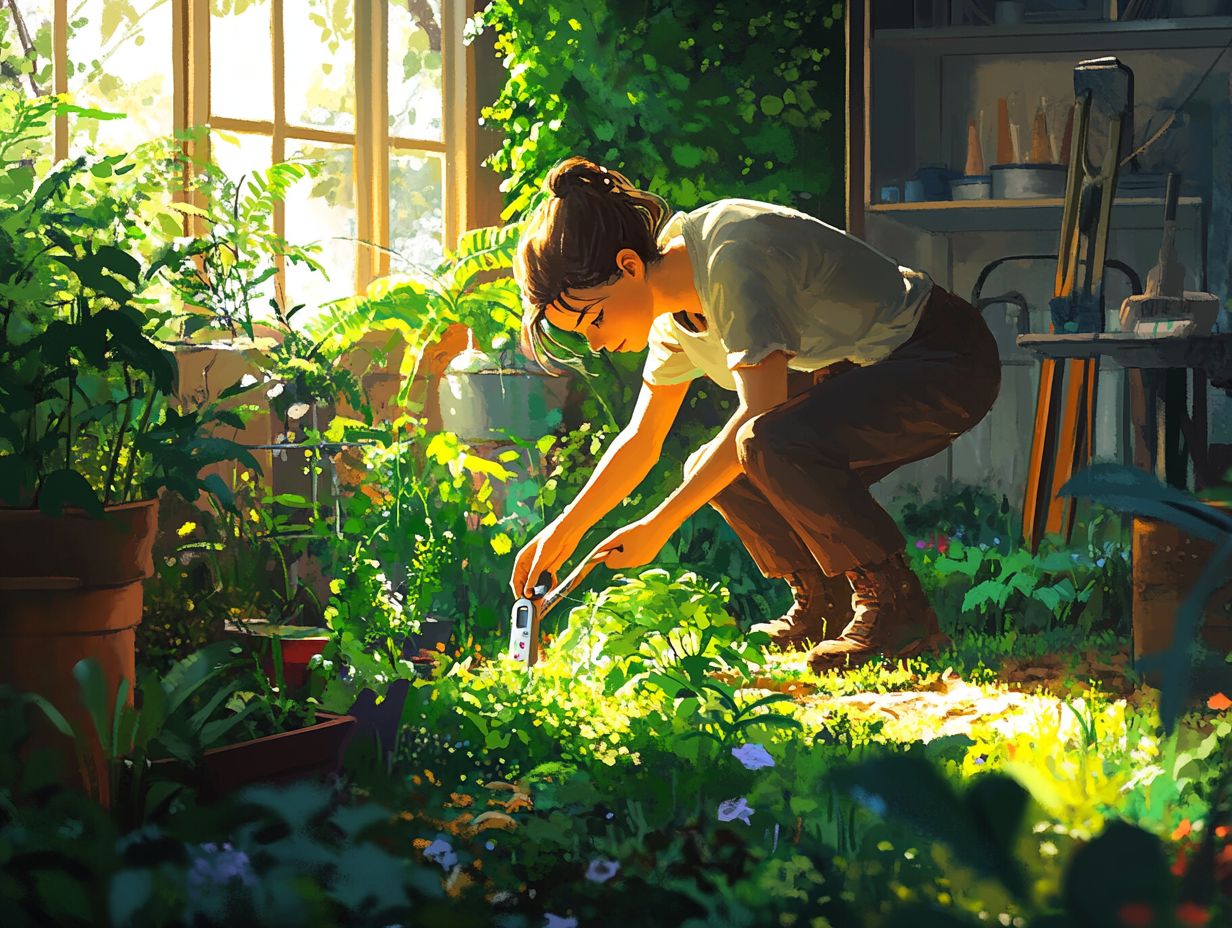
What are the benefits of monitoring water levels in my garden?
Monitoring water levels can help ensure that your plants are getting the right amount of water, preventing over or under watering. It can also help you conserve water and save money on your water bill.
How often should I check the water levels in my garden?
It’s recommended to check the water levels in your garden at least once a week, especially during hot or dry weather. However, factors such as soil type, plant type, and weather conditions may influence how often you need to check.
Don t wait! Regular checks can save your plants from stress.
How do I check the water levels in my garden?
The simplest way to check water levels is by using a soil moisture meter or probe. You can also dig a small hole near the roots of your plants and feel the soil moisture with your fingers.
With these tips, you re ready to keep your plants thriving!
What is the best time of day to check water levels in my garden?
Check water levels in the morning before the sun rises high. This helps you adjust watering before the heat sets in.
If you notice heavy rains, understand the flood risk and ensure your water supply is efficient.
What can I do if I notice my plants are being over or under watered?
If your plants are overwatered, cut back on how often and how much you water them. If they are underwatered, increase both the frequency and amount.
Consider each plant’s needs. Tropical varieties, like Bird of Paradise and Snap Plant, need special care.
Are there any tools or devices that can help me monitor water levels in my garden?
Absolutely! Tools like smart irrigation systems, moisture sensors, and drip irrigation systems can automate watering for optimal plant health.
Bubbler sensors and radar sensors offer precise water level measurements. You might also consider a monitoring pipe for larger gardens.

